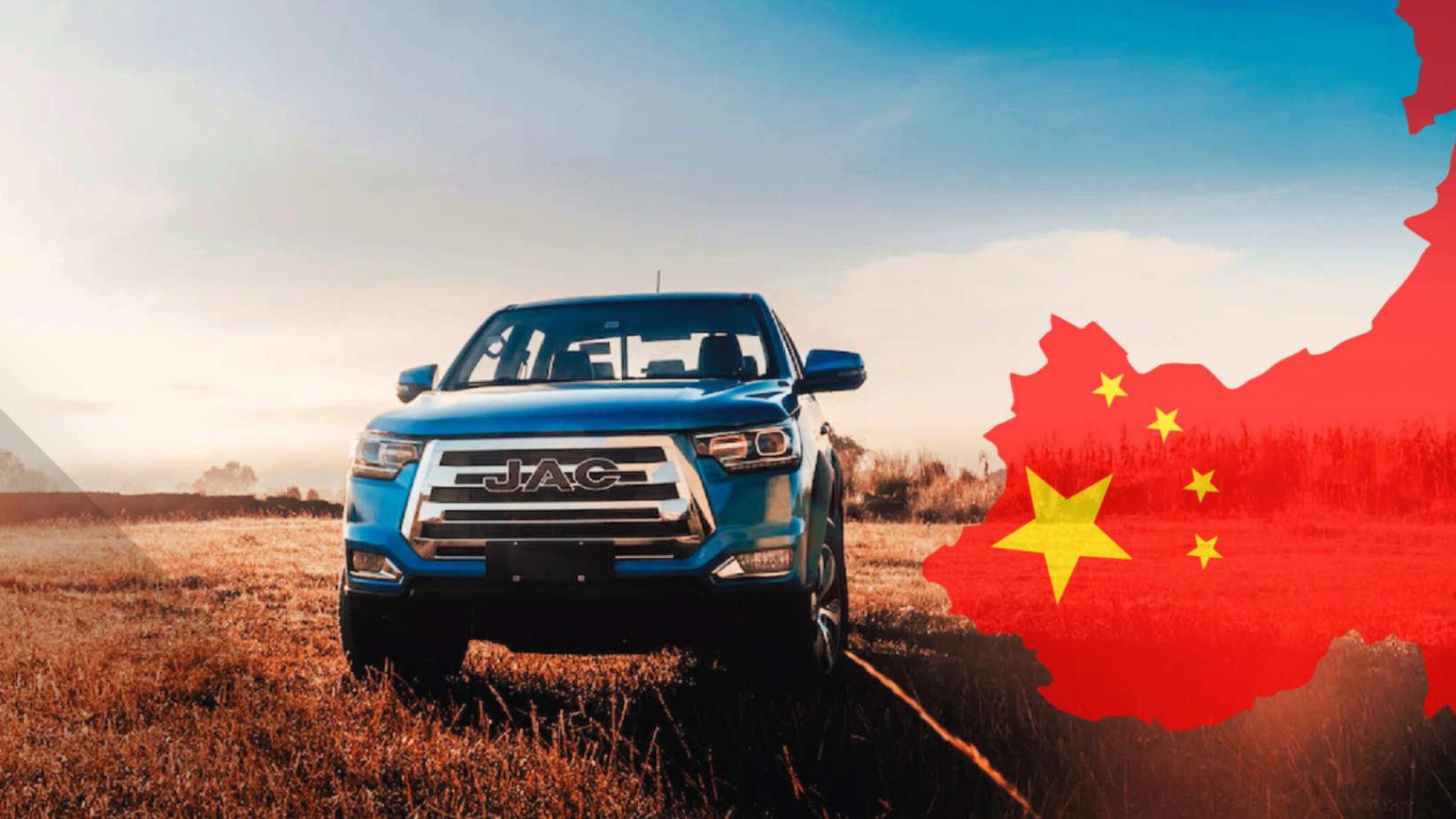
Nissan's history is a testament to resilience, innovation, and the ability to reinvent itself in the face of adversity. From its Japanese roots, the brand has faced monumental challenges that have tested its ability to adapt and survive in the global automotive industry.
The Early Challenges: Post-War Reconstruction
After World War II, Japan faced massive devastation and an unprecedented shortage of resources. Entire cities were in ruins, and the country's industrial infrastructure had been virtually annihilated. Amidst this desolation, Nissan had to reinvent itself to survive.
Watch: Bombs Couldn't Stop Him | The Incredible Story of Honda
The company, founded in 1933, was at a crossroads. Demand for automobiles had plummeted, and resources were scarce. However, the need for transportation and machinery for the country's reconstruction offered a window of opportunity. With its resilience and vision, Nissan decided to seize this opportunity to transform itself and play a crucial role in revitalizing Japan's automotive industry.
During this period, Nissan began to diversify its production, manufacturing not only cars but also trucks and buses, which were essential for rebuilding the country's infrastructure. The company adapted its production lines and focused on efficiency and quality, which allowed it to gain the trust of the local market and the Japanese government.
Additionally, Nissan invested in innovation and technology, developing new models that were adapted to the needs of the market and the limitations of resources. This ability to adapt and reinvent itself not only helped Nissan survive but also contributed significantly to the reconstruction of the Japanese economy. The company not only recovered but emerged stronger, laying the foundation for its future growth and solidifying its position as a pillar of the automotive industry in Japan and worldwide.

The 1990s Economic Crisis: The Beginning of the Alliance with Renault
In the 1990s, Japan experienced a severe economic crisis that affected many companies, including Nissan. Sales plummeted and debts piled up, leading the company to a precarious financial situation. Competition in the automotive sector intensified, and Nissan found itself at a crossroads that threatened to end its legacy.
The company was at a critical point, with billions of dollars in debt and a declining market share. To make matters worse, many of its car models failed to capture the public's interest, and a lack of innovation left Nissan lagging behind its competitors. Morale within the company was low, and investor and consumer confidence was rapidly eroding.
Amidst this bleak outlook, in 1999, Nissan formed a strategic alliance with Renault, a crucial move that allowed the company to survive and begin its road to recovery. This alliance was not simply a financial agreement but a merger of business philosophies and resources aimed at revitalizing Nissan from the ground up.
The agreement with Renault brought about a series of profound changes. Carlos Ghosn, a Renault executive known for his ability to turn around struggling companies, was appointed CEO of Nissan.
The Resurgence Under Carlos Ghosn
Carlos Ghosn arrived at Nissan with a mission to restructure the company. He implemented drastic measures, such as cost-cutting and a strategic reorientation. His focus was not only on reducing expenses but also on optimizing resources and creating a more efficient and productive work environment.
Under his leadership, Ghosn quickly identified problematic areas within the organization and did not hesitate to make tough decisions. He closed unprofitable plants, reduced the workforce, and renegotiated contracts with suppliers to obtain better terms. These actions, although painful for many, were essential to stop the company's financial decline and lay the foundation for a sustainable recovery.
In addition, Ghosn introduced a culture of accountability and efficiency that transformed the way Nissan operated. Clear objectives were established, and employees were incentivized to achieve specific goals, fostering a more dynamic and results-oriented work environment. The company also invested in the renewal of its product line, with a focus on quality and innovation.
You might also be interested in: How a Worker Created an Automotive Empire | The Story of Toyota
One of the key points of the restructuring was the revitalization of Nissan's product portfolio. Ghosn pushed for the development of new models that not only met quality standards but also captured the market's imagination. Under his direction, Nissan successfully launched the Nissan X-Trail, an SUV that quickly gained popularity for its versatility and robust design. Simultaneously, the company redesigned the iconic GT-R, a sports car that became a symbol of Nissan's engineering and innovation.
Thanks to these actions, Nissan managed to recover its financial stability and launched successful models like the Nissan X-Trail and the revamped GT-R, marking the brand's resurgence. The combination of efficient management and an attractive product offering not only allowed Nissan to overcome the crisis but also solidified its position as a leader in the global automotive industry. Carlos Ghosn's vision and leadership were fundamental to this transformation, demonstrating that even in the darkest of times, with the right decisions and precise execution, it is possible to reverse a company's fortune and lead it towards a promising future.

The Nissan Leaf Era: Leading the Electric Revolution
At a time when the automotive industry was skeptical about electric mobility, Nissan dared to lead the change with the development and launch of the Nissan Leaf.
The Leaf, the first mass-market electric vehicle, helped Nissan position itself as a leader in green technology, transforming the brand's image and demonstrating its ability to innovate.
Developing the Nissan Leaf was no easy task. It required a significant investment in research and development, as well as a paradigm shift in how to think about mobility. Nissan understood that the transition to a more sustainable future was inevitable and decided to get ahead of its competitors by betting on a technology that at the time raised many doubts in the industry.
The Leaf was conceived as an affordable and practical car for everyday use, breaking with the perception that electric vehicles were niche products or too expensive for the average consumer. With an initial range of approximately 160 kilometers per charge, the Leaf offered a viable solution for urban commuting, changing the minds of many drivers about the limitations of electric vehicles.
Additionally, Nissan implemented a series of strategies to support the adoption of the Leaf. The company worked in collaboration with governments and organizations to develop charging infrastructure, facilitating the creation of fast-charging stations in urban and suburban areas. This holistic approach helped to break down one of the main barriers to the mass adoption of electric vehicles: range anxiety and the lack of charging points.
The success of the Nissan Leaf was immediate and palpable. Since its launch in 2010, the Leaf has become one of the best-selling electric vehicles worldwide, exceeding expectations and reaffirming Nissan's vision for the future of mobility. The vehicle not only reduced carbon emissions but also pushed the automotive industry towards a more sustainable era, encouraging other manufacturers to accelerate their own developments in the field of electric vehicles.
The impact of the Leaf extended beyond sales and technology. It transformed the public perception of Nissan, positioning it as an innovative company committed to the environment. This change in brand image not only attracted new customers but also strengthened the loyalty of those who already trusted the company.
Recent Crisis: Scandals and a New Restructuring
The downfall of Carlos Ghosn and the subsequent financial scandals rocked Nissan, impacting its stability and global reputation. In 2018, Ghosn was arrested on charges of financial misconduct, including underreporting his income and misusing corporate assets. This scandal not only exposed a series of irregularities within Nissan's management but also triggered a crisis of confidence both internally and externally.
The news of Ghosn's arrest had immediate repercussions: Nissan's share price plummeted and investor confidence eroded rapidly. Additionally, the situation created deep uncertainty among employees and the company's business partners, affecting morale and cohesion within the organization. Ghosn's downfall also jeopardized the alliance with Renault and Mitsubishi, creating tensions that threatened to destabilize the strategic collaboration that had been fundamental to Nissan's recovery.
Learn more about the alliance with Mitsubishi in: Nissan-Mitsubishi: A Marriage of Convenience or True Love?
In response to this crisis, Nissan implemented new restructuring strategies, seeking to rise again in a highly competitive market. The company appointed Hiroto Saikawa as interim CEO, who committed to conducting a thorough review of governance practices and implementing reforms aimed at restoring integrity and transparency within the organization.
One of the first measures adopted was the review and strengthening of the board of directors, incorporating independent members and corporate ethics experts to oversee operations and ensure greater accountability. Additionally, Nissan launched a plan to reduce costs and optimize its operating structure, closing unprofitable plants and focusing on key markets where the brand had greater growth potential.
Simultaneously, the company redoubled its efforts in innovation and technology, seeking to reaffirm its leadership in the electric vehicle and autonomous vehicle markets. Nissan continued to invest in expanding its electric vehicle lineup, with the introduction of new models such as the Nissan Ariya, an electric SUV that reflects the company's commitment to sustainable mobility.
Furthermore, Nissan worked closely with Renault and Mitsubishi to strengthen the alliance and explore new opportunities for synergies. This collaborative approach allowed the three companies to share technologies and resources, optimizing their operations and jointly addressing the challenges of the global market.
Despite the challenges and moments of uncertainty, Nissan has demonstrated a remarkable capacity for resilience. The implementation of these new restructuring strategies and the firm commitment to innovation and sustainability have allowed the company to begin to recover its stability and reputation. Today, Nissan remains a key player in the automotive industry, with a clear vision for the future and a renewed focus on operational excellence and corporate integrity.






